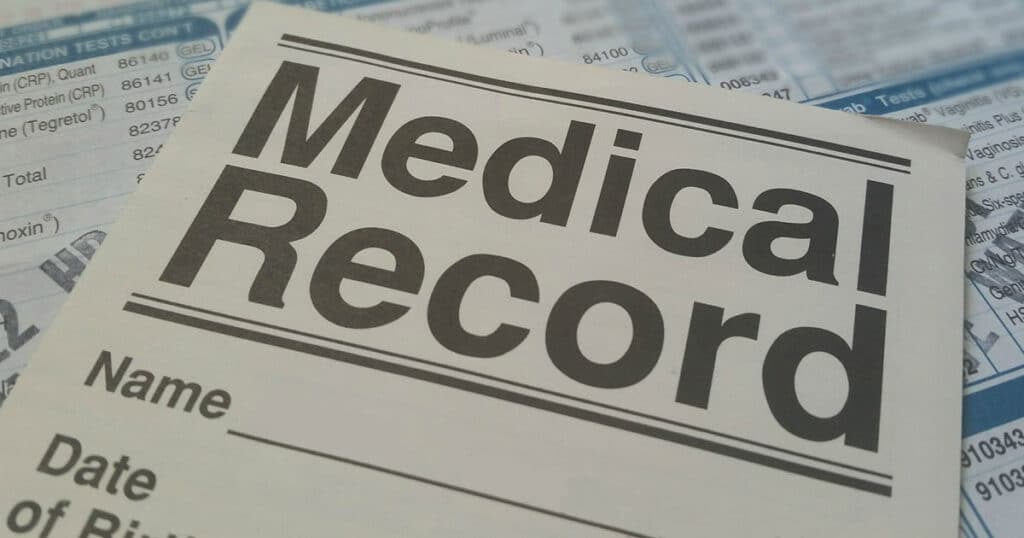Can Degenerative Disc Disease (DDD) Qualify for SSDI Benefits?
Home » Applying for SSDI » Medical Conditions, Listed Impairments & SSDI » Can Degenerative Disc Disease (DDD) Qualify for SSDI Benefits?
Degenerative disc disease (DDD), which is also known as Spondylosis, exists when at least one intervertebral disc (a cushion between the bones in the spine) has deteriorated.
Over time, the cushion or padding provided by the spinal discs lessens due to loss of fluid and damage to the disc. This causes decreased space between the vertebrae (the bones of the spine) and can cause the vertebrae to rub together.
The deterioration of the spinal column in this manner can lead to significant pain and weakness along with poor flexibility and more difficulty with general movement in the back, legs and arms.
Your body may develop bone spurs to compensate for the loss of protection, and this, too, can cause additional pain and discomfort. Degenerative disc disease is most commonly a progressive development that occurs naturally and gradually as you age. DDD is highly prevalent in people 40 or older.
You may not experience any signs or symptoms for decades, as degenerative disc disease develops over time. The initial deterioration of your discs may have occurred long ago without your realization – it could come from any number of situations, such as a sports injury or work injury that never fully healed.
Degenerative Disc Disease Symptoms and Treatments
Eventually, the wear and tear may involve bulging, herniated, desiccated (dehydrated), or thinned/compressed discs. It may reach a point that causes you pain, stiffness, weakness, inflexibility or limited movement in your spine. Affected discs can also cause the spinal column to move out of alignment (a condition known as spondylolisthesis), or may cause the spinal canal or nerve root canals to narrow (which is called spinal stenosis), leaving less space for the spinal cord and/or nerve roots. If the spinal cord or nerve roots are compressed by an affected disc, bone spur, or calcification, a variety of symptoms may follow.
Depending on the location of DDD in your back, other parts of your body can also experience pain, weakness, numbness, tingling, or difficulty with movement or control. Shooting pain may travel through your arms or legs, depending on the part of the spine affected, and many people experience muscle spasms in their back. Bowel or bladder control issues can happen in degenerative disc disease cases involving nerve or spinal cord compression.
The type of treatment you require will vary based on the extent and type of your deterioration, and your overall health. For some people, physical therapy and occupational therapy may be sufficient. Some people may require surgery, joint injections, radiofrequency or other types of medical procedures to provide stimulation to the area. And many people will rely on prescribed or over-the-counter medications to manage the pain. Some people may need a brace, cane, walker, or even wheelchair, depending on the severity of their condition. Following your doctor’s instructions is an important part of managing your DDD. Each person’s treatment plan is unique, depending on the extent and location of the DDD in their spine, and depending on their other medical conditions.
Does Degenerative Disc Disease Qualify Me for Disability Benefits?
Degenerative Disc Disease is discussed in the Social Security Administration’s “Blue Book” listing of disabling conditions, in Section 1 (Musculoskeletal System) under paragraph 1.04 (Disorders of the spine).
It is certainly possible to qualify for Social Security Disability Insurance benefits with Degenerative Disc Disease, depending on the facts of your specific case.
The pain caused by the deterioration of the spinal discs from degenerative disc disease can cause intense pain and regular flare ups. DDD can make it extraordinarily difficult to sit, lift, carry, twist, turn your head, walk, change positions, bend and/or sleep. All of these actions can make it highly difficult to complete work tasks on a regular, sustained basis.
The Social Security Administration provides a set of criteria that an applicant needs to demonstrate (with medical records) in order to “meet or equal” the listing for DDD. However, you don’t always need to meet or equal the listing in order to qualify. Because, at the end of the day, what the SSA generally cares about most is whether or not your Degenerative Disc Disease (DDD) meets certain requirements, including:
- That it rises to the level of a “severe impairment”, meaning it impacts your ability to do work;
- That it, combined with any other impairments you may have, prevent you from sustaining work;
- That it has affected you, or is expected to affect you, for at least one year (or to result in death).
If that is the case, then you may very well qualify for monthly disability benefits.
Next Steps
If you or a loved one have Degenerative Disc Disease and are considering a claim for disability benefits, we recommend you read our articles about the process of applying for SSDI and the way the Social Security Administration uses their Sequential Evaluation Process to determine disability.
This article is presented for general information purposes only. Nothing in this article should be taken as medical advice. Medical decisions (including whether to start, stop, or modify any treatment plan) are extremely important and should always be made with the advice and counsel of a qualified medical professional.
Since 2010, Citizens Disability has been America’s premier Social Security Disability advocate. Our mission is to give a voice to the millions of Americans who are disabled and unable to work, helping them receive the Social Security Disability benefits to which they may be entitled. We have helped tens of thousands of individuals with their SSDI claims. Your success is our mission.
It is easy to get started.
It is easy to get started. No upfront costs – You only pay if we win!
Oops! We could not locate your form.









